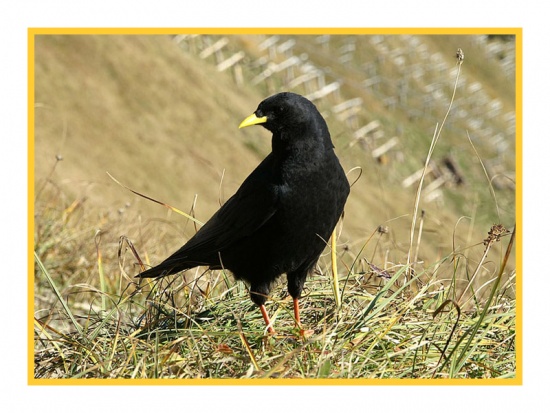Alternative name: Alpine Chough
- Pyrrhocorax graculus
Identification
36-39cm. Glossy black plumage, red legs, long curved yellow bill.
Distribution
Widespread and locally common in mountain areas of southern Europe, North-West Africa and South-West Asia. In Europe breeds in the Cantabrians, Sierra de Gredos and Pyrenees, in the Alps, Corsica and southern Italy, and in the mountain ranges of southeast Europe to southern Greece and Crete. Recently recorded in southern Spain where thought to be recent immigrants from Morocco. In North Africa breeds in the Rif and Atlas of central Morocco and in Asia in the mountains of eastern Turkey and the Caucasus, and also occurs in the Middle East although current status unclear. Range extends eastwards across Central Asia to the Himalayas. Vagrants recorded in Czechoslovakia, Hungary, Gibraltar, Cyprus, and Armenia.
The species is mostly resident with some altitudinal movement in winter.
Taxonomy
Nominate subspecies occurs over much of Western Palearctic range with slightly larger digitatus in the Middle East and east to the Himalayas. Some sources recognize a third subspecies forsythi. Red-billed Chough is a close relative but White-winged Chough is not closely related.
Habitat
Mountain pastures and meadows with neighbouring cliff faces and rocky outcrops, also around high-altitude human habitation such as ski resorts.
Behaviour
The diet includes insects in summer and berries in winter.
It nests on a cavity or cliff ledge.




